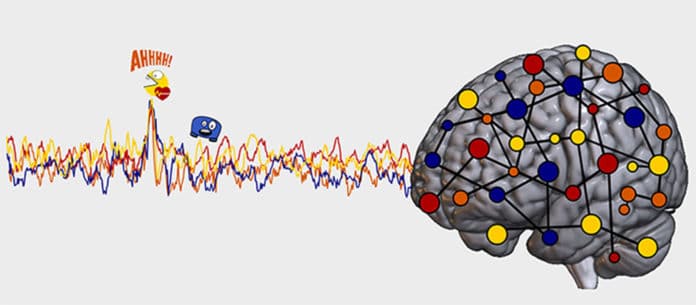Various investigations have sought to interface given emotions, for example, fear or pleasure, to explicit areas of the brain, yet without progress. Some hypothetical models recommend that emotions arise by coordinating numerous mental processes set off by an event. These models include the brain orchestrating adapted emotional responses via synchronizing motivational, expressive, and visceral mechanisms.
To investigate this theory, scientists from the University of Geneva (UNIGE) studied brain activity using functional MRI. They analyzed the feelings, expressions, and physiological responses of volunteers while playing a video game that had been specially developed to arouse different emotions depending on the game’s progress.
The study shows that different emotional components recruit several neural networks in parallel distributed throughout the brain and that their transient synchronization generates an emotional state. The somatosensory and motor pathways are two of the areas involved in this synchronization, thereby validating the idea that emotion is grounded in action-oriented functions to allow an adapted response to events.
Scientists postulate that emotions are subjective: two individuals facing the same situation may experience a different emotion.
Joana Leitão, a post-doctoral fellow in the Department of Fundamental Neurosciences (NEUFO), said, “A given event is not assessed in the same way by each person because the perspectives are different.”
A theoretical model known as the component process model (CPM) – devised by Professor Klaus Scherer, the retired founding director of CISA– will generate multiple responses in the organism. These relate to components of cognitive assessment (novelty or concordance with a goal or norms), motivation, physiological processes (sweating or heart rate), and expression (smiling or shouting). In a situation that sets off an emotional response, these different components influence each other dynamically. It is their transitory synchronization that might correspond to an emotional state.
To assess the applicability of the model, scientists developed a video game.
Dr. Leitão said, “The aim is to evoke emotions that correspond to different forms of evaluation. Rather than viewing simple images, participants play a video game that puts them in situations they’ll have to evaluate so they can advance and win rewards.”
“The game is an arcade game that is similar to the famous Pacman. Players have to grab coins, touch the nice monsters, ignore the ‘neutral monsters’ and avoid the ‘bad guys’ to win points and pass to the next level.”
The scenario involves situations that trigger the four components of the CPM model differently. Simultaneously, scientists measured brain activity via imaging, facial expression by analyzing the zygomatic muscles, feelings via questions, and physiology by the skin and cardiorespiratory measurements.
Scientists noted, “All of these components involve different circuits distributed throughout the brain. By cross-referencing the imagery data with computational modeling, we were able to determine how these components interact over time and at what point they synchronize to generate an emotion.”
The outcomes indicate that a region deep in the brain called the basal ganglia is involved in this synchronization. This structure is a convergence point between multiple cortical regions, each of which is equipped with specialized affective, cognitive, or sensorimotor processes. The other regions involve the sensorimotor network, the posterior insula, and the prefrontal cortex.
Patrik Vuilleumier, full professor at NEUFO and senior author of the study, said, “The involvement of the somatosensory and motor zones accords with the postulate of theories that consider emotion as a preparatory mechanism for action that enables the body to promote an adaptive response to events.”
Journal Reference:
- Joana Leitão et al. Computational imaging during video game playing shows dynamic synchronization of cortical and subcortical networks of emotions. DOI: 10.1371/journal.pbio.3000900
